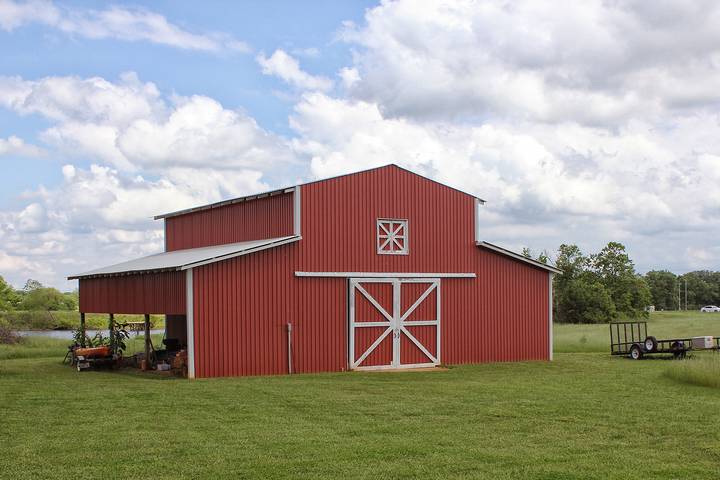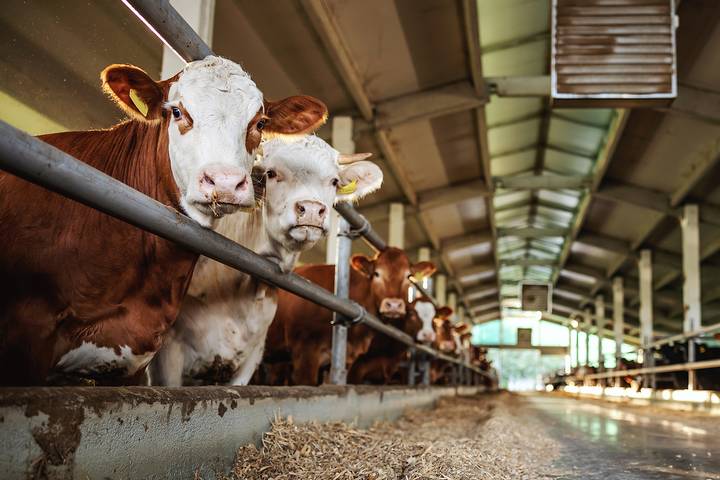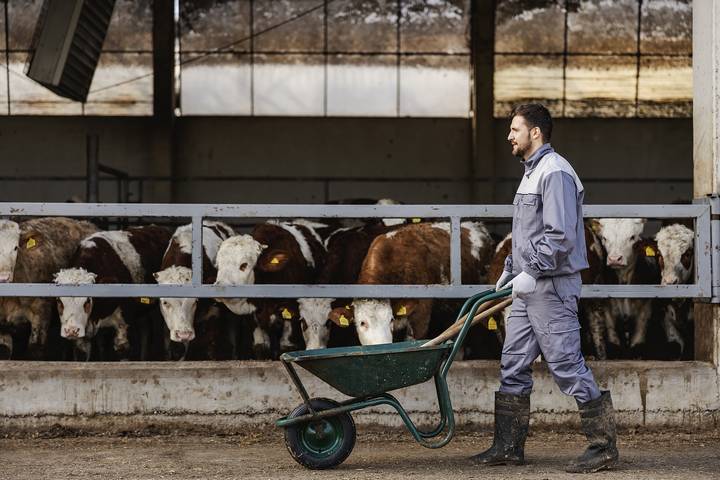How to Set Up a Calving Barn
For those who raise cattle, calving season is an exciting time. It is not only the miracle of life, but it is an investment paid off and a commitment to raise the next bovine generation.
Regardless of the time of year, you must ensure the animal’s welfare with a well-designed calling barn that mitigates disease and improves the entire herd’s health.
For those looking for advice, this is how to set up a calving barn.
Barn Location

Among the most important first steps in setting up a calving barn is choosing the right location. You want good protection from winter winds in a well-drained property area. South-facing will provide morning sunshine as the days are shorter in the winter, so it will heat the barn and help dry out any wet, cold ground. Although people think that calving barns are to protect the animals from cold temperatures, wet conditions are far worse.
A protected location will allow you to incorporate good ventilation while maintaining the right humidity and temperature for calving. Proper ventilation is vital for eliminating and ammonia-rich environment and any potential respiratory issues with the animals.
Barn Curtains

Barn curtains are a great way to control temperature, airflow, lighting and all-around animal protection. They are retractable, unlike rigid siding materials and can be either roll-up or drop-down systems using a hand crank.
Top-down systems allow fresh air to come in and mix with warm air trapped at the roof. This keeps sudden temperature changes away from the animals. Roll-up systems give you quick air exchange at floor level to rapidly cool the barn. Some systems incorporate both methods.
Barn curtains benefit you with managing:
- Dust
- Methane
- Ammonia
- Moisture
- Mould
- Other various airborne diseases
- Rain
- Heat
- Cold
- Airflow
Beyond the calving season, you will save costs on HVAC and fan usage as you can retract the curtains to provide adequate airflow. Barn curtains also come in various colours and thicknesses to let in light, which benefits animal production. They can also be set up to open and close using weather and thermostatic temperature controls that adjust throughout the day to keep the livestock comfortable.
Barn Structure

Building a barn can be expensive, so it is important to have a multi-use structure with enough room to function during calving season and beyond. The barn should be sound and have full roof coverage for weather protection for the animals. You should have a large group pen for cows under watch, separate pens for those calving and pens for bonding calf pairs. This keeps every animal separate and makes for a cleaner environment.
Low concrete knee walls allow for protection and ventilation throughout the structure. Also, ensure a gravel base under the calving stalls for better drainage, as they need to maintain a dry floor. This also helps to keep the bedding dry as well and make the layer of straw deep enough so the calves can nestle in to keep warm. Stall doors should be big enough to swing fully and handle your animal easily.
Make sure your barn design allows for machinery and equipment to pass through along alleyways and corners with enough room. Good lighting in each stall is useful, and partition walls should have room to roll under and out if a cow brings someone down and they need to roll out.
Extra storage in the structure is vital, along with a warm room for an area where the crew can sit, share information and take breaks.
Barn Sanitation

One of the most important safety features to incorporate into your calving barn is a sanitation protocol. A newborn calf has an immature immune system, and in a barn setting, disease and bacteria are potentially present.
You must keep up on sanitation to keep the herd safe. After a calf goes through the barn, use bleach and water to clean all smooth stall surfaces, boards, metal panels and alleyways. Remove any soiled straw first, then keep the area as dry as possible. You can also work some lye into the soil and open up the barn curtains to let in the sun, as it is a great, natural disinfectant.
Once completed, lay down fresh sawdust and straw for dry bedding when the next calving occurs. Make sure to sanitize all your birthing equipment, including:
- Pullers
- Chains
- Esophageal tubes
- Bottle nipple
- Boots
- Cloves
- Work clothing
This is how to set up a calving barn. Whether building a new structure or outfitting an old one, consider these ideas for a successful and fruitful calving season.





